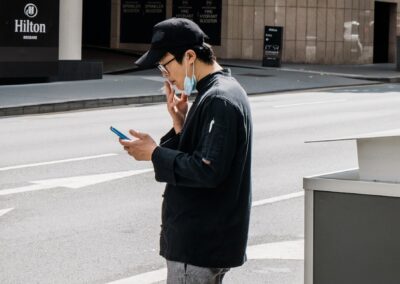Strategies for Building Inclusive VR Social Platforms
The Importance of Inclusive VR Social Networks
Creating inclusive VR social networks is paramount in today’s digital age, where virtual reality (VR) platforms are becoming increasingly popular for social interaction, collaboration, and entertainment. As VR technology advances, it is crucial to ensure that these virtual environments are designed to promote inclusivity and diversity, providing a welcoming space for all users. This commitment not only enhances user experience but also fosters a sense of community and belonging, which are essential for the success of any social platform.
Inclusive VR social networks aim to break down barriers and create environments where users from diverse backgrounds feel represented and respected. This involves designing features and policies that address the needs of different demographics, including people of various races, genders, ages, and abilities. By prioritizing inclusivity, VR social networks can attract a broader user base, enhance user satisfaction, and promote positive social interactions.
Moreover, inclusivity in VR is not just a moral imperative but also a strategic advantage. Platforms that prioritize diversity and inclusivity are more likely to innovate and adapt to the needs of a global audience. This article explores the key strategies for designing inclusive VR social networks, drawing insights from successful case studies and industry best practices.
Implementing Inclusive Design Principles
The foundation of inclusive VR social networks lies in implementing inclusive design principles from the outset. Inclusive design ensures that VR platforms are accessible and usable by as many people as possible, regardless of their background or abilities. This involves considering various aspects of user experience, from interface design to content moderation.
One essential aspect is accessibility. VR platforms should be designed to accommodate users with disabilities, offering features such as adjustable text sizes, voice commands, and haptic feedback. Additionally, platforms should support a range of input devices, including motion controllers, gamepads, and adaptive devices, to ensure that users with different physical abilities can interact with the virtual environment effectively.
Another crucial element is representation. Inclusive VR social networks should provide a diverse range of avatars and customization options, allowing users to express their identities authentically. This includes offering various skin tones, body types, and gender expressions. Representation also extends to the content and experiences available on the platform. Ensuring that VR environments reflect diverse cultures, languages, and perspectives helps create a more inclusive and engaging experience for all users.
Fostering a Welcoming Environment
Creating a welcoming environment on inclusive VR social networks requires proactive efforts to ensure that all users feel safe and respected. This involves implementing robust community guidelines and moderation policies that prevent harassment, discrimination, and hate speech. Effective moderation tools, such as reporting systems and automated content filtering, are essential for maintaining a positive and inclusive atmosphere.
Community building is another critical aspect. VR platforms should facilitate positive social interactions by offering features that encourage collaboration and mutual respect. This can include virtual spaces designed for group activities, such as co-working, gaming, or social events, where users can connect and engage with others in meaningful ways. Promoting events and initiatives that celebrate diversity and foster inclusivity can also help build a supportive community.
Education and awareness are also vital. Providing users with resources and training on topics related to inclusivity and diversity can promote empathy and understanding. For example, VR social networks can host workshops, panels, and discussions on issues such as cultural sensitivity, disability awareness, and gender inclusivity. By fostering an informed and compassionate user base, platforms can create a more inclusive and welcoming environment.
Case Studies of Inclusive VR Social Networks
Several VR social networks have successfully implemented strategies to promote inclusivity and diversity, offering valuable insights for others in the industry. One notable example is AltspaceVR, a social VR platform that has prioritized inclusivity through various initiatives. AltspaceVR offers a diverse range of avatars and customization options, allowing users to represent themselves authentically. The platform also hosts regular events focused on diversity and inclusivity, such as LGBTQ+ meetups and cultural celebrations, fostering a sense of community and belonging.
Another example is VRChat, which has implemented robust community guidelines and moderation tools to ensure a safe and inclusive environment. VRChat’s moderation team actively monitors the platform for inappropriate behavior and provides users with tools to report and block harmful content. This proactive approach has helped create a welcoming space where users from diverse backgrounds can interact and express themselves freely.
Additionally, Engage VR, an educational and professional VR platform, has made inclusivity a core part of its design. Engage VR offers a range of accessibility features, such as adjustable environments and support for various input devices, ensuring that users with different abilities can participate fully. The platform also emphasizes representation, offering diverse avatars and promoting events that highlight different cultures and perspectives.
Conclusion: The Future of Inclusive VR Social Networks
Designing inclusive VR social networks is essential for creating virtual environments that welcome and respect users from all backgrounds. By implementing inclusive design principles, fostering a welcoming environment, and learning from successful case studies, VR platforms can ensure that they meet the needs of a diverse and global user base.
As technology continues to evolve, the importance of inclusivity and diversity in VR will only grow. Embracing these principles not only enhances user experience but also drives innovation and success in the competitive landscape of virtual reality. By committing to inclusivity, VR social networks can create vibrant and supportive communities where all users feel valued and empowered.
—
#InclusiveVRSocialNetworks #VRInclusivity #DiversityInVR #VirtualRealityDesign #ModernTechnology #BusinessSuccess #LeadershipInTechnology #SaudiArabia #UAE #Dubai #Riyadh























